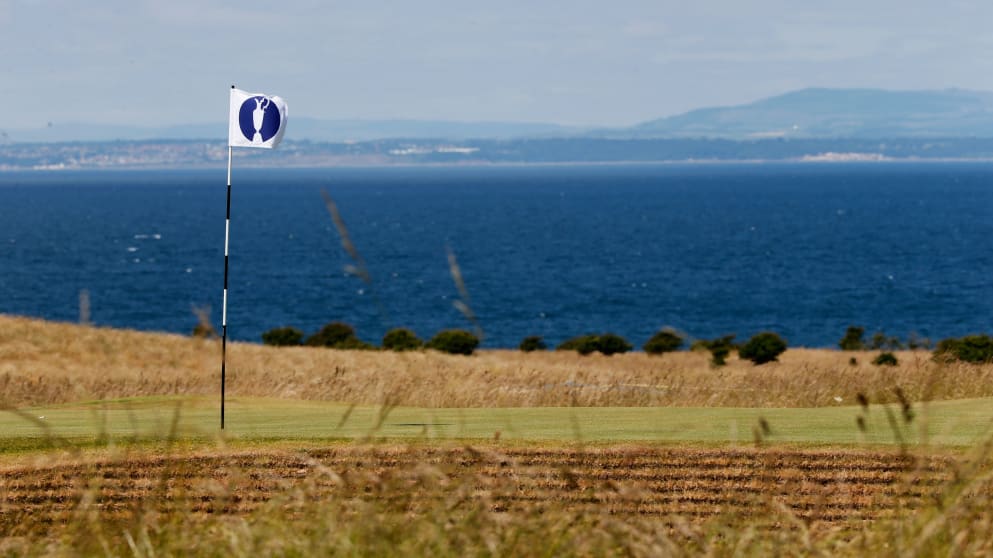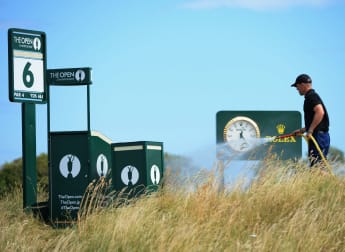europeantour.com takes you inside the host venue for The 142nd Open Championship, the 16th to be staged at historic Muirfield...

1st, 447 yards, par four: A tough opening hole has been made even harder with the addition of a new bunker around 300 yards from the tee on the left-hand side of the fairway. The ideal tee shot is on that side of the fairway to give a clear view up the length of the green, where a new small hollow has been added to the left of the putting surface.
2nd, 364 yards, par four: One of seven holes to be lengthened with the addition of a new tee, but still the shortest par four on the course. A wall marking the out of bounds runs tight down the left of the hole, but anyone bailing out right with their approach to the green will likely find one of the four bunkers. Two other bunkers have been removed since the Open in 2002, but the remainder have been moved closer to the putting surface.
3rd, 377 yards, par four: A good birdie opportunity with most players likely to hit an iron off the tee as the fairway narrows at 290 yards. Distance control is vital to the 40-yard long green which is protected by new hollows long and right and bunkers moved closer to the green on the same side.
4th, 226 yards, par three: The first par three was lengthened by 33 yards in time for the 2002 Open and gets another new tee to add 13 more yards in 2013. The green itself is 40 yards long to provide plenty of alternate pin positions and protected by three bunkers short and right.
5th, 559 yards, par five: Played in the same direction as the fourth, Muirfield's first par five will offer plenty of birdies if it is downwind. The drive has to carry a large expanse of rough area to reach the fairway, which is guarded by bunkers on the right and left. More bunkers guard the green, but nevertheless a good scoring opportunity.
6th, 461 yards, par four: A tough drive usually played into a crosswind to a fairway with four bunkers on the left to catch any mishit shots. New hollows have been introduced short and left of the green and the right-hand greenside bunker moved slightly to the left.
7th, 184 yards, par three: A demanding par three played uphill and into the prevailing wind. The green slopes from back to front and is 37 yards long so an accurate shot is vital to give any hope of a birdie.
8th, 441 yards, par four: A risk-and-reward hole which gives player the option of trying to carry a cluster of bunkers at the corner of the dog-leg or play left of the sand and leave a longer approach to the green. A bunker short and right of the green has been moved closer to the putting surface.
9th, 554 yards, par five: The biggest change to the course is on the ninth, where a land swap with neighbours the Renaissance Club has enabled the tee to be moved back almost 50 yards. Out of bounds comes into play down the left while a new bunker has been added on the right of the fairway. Into the wind there will likely be some high scores recorded here.
10th, 469 yards, par four: A new fairway bunker has been added 290 yards from the tee and the fairway itself has also been realigned, with the existing fairway bunkers moved left to reflect the change. The prevailing wind pushes tee shots towards these bunkers while the second has to be played to a flat and partially hidden green.
11th, 387 yards, par four: A completely blind tee shot over the crest of a hill will find a fairly generous fairway despite the introduction of a new fairway bunker built into the right-hand side of the fairway 320 yards from the back tee. The small green is sharply contoured and surrounded by sand.
12th, 379 yards, par four: A good drive will set up a decent birdie opportunity, although the second shot must avoid the solitary bunker to the left of the green - which has been extended - and the four which guard the other side.
13th, 190 yards, par three: An extra 32 yards were added to this hole in time for the 2002 Open, but it has not been altered since. The green is 46 yards deep but is never more than 15 paces wide and falls away into three deep bunkers on the right and another two on the left.
14th, 475 yards, par four: Usually played into the prevailing wind, the 14th will provide a daunting start to Muirfield's closing stretch. A new tee makes the hole 30 yards longer and the second is played to a plateau green that falls away on all sides.
15th, 448 yards, par four: The 15th will also play around 30 yards longer than 11 years ago and requires an accurate drive with deep bunkers on both sides of the left-to-right dog-leg. Members refer to the green as the Camel's Back because of its significant contours. The first bunker on the left of the green has been filled in while a couple of the others have been edged closer to the putting surface.
16th, 186 yards, par three: Seven bunkers guard the green on a hole which will play shorter than its yardage in the prevailing wind, although Lee Trevino holed out from one of them on his way to winning the 1972 Open.
17th, 575 yards, par five: Another hole lengthened by the addition of a new tee, the 17th will still provide a birdie opportunity from a good drive played right of the bunkers built into the corner of the dog-leg. Gary Evans famously lost a ball here in the final round in 2002, dropped another under penalty and hit that onto the green before holing from 50ft for par. He missed the four-man play-off by a single shot.
18th, 470 yards, par four: A tough closing hole made harder by a new tee adding 21 yards in length. Three bunkers cut into the landing area while the green is also protected by sand. The iconic island bunker to the right of the green has been altered to widen the sand area to reduce the chance of a virtually unplayable lie.




